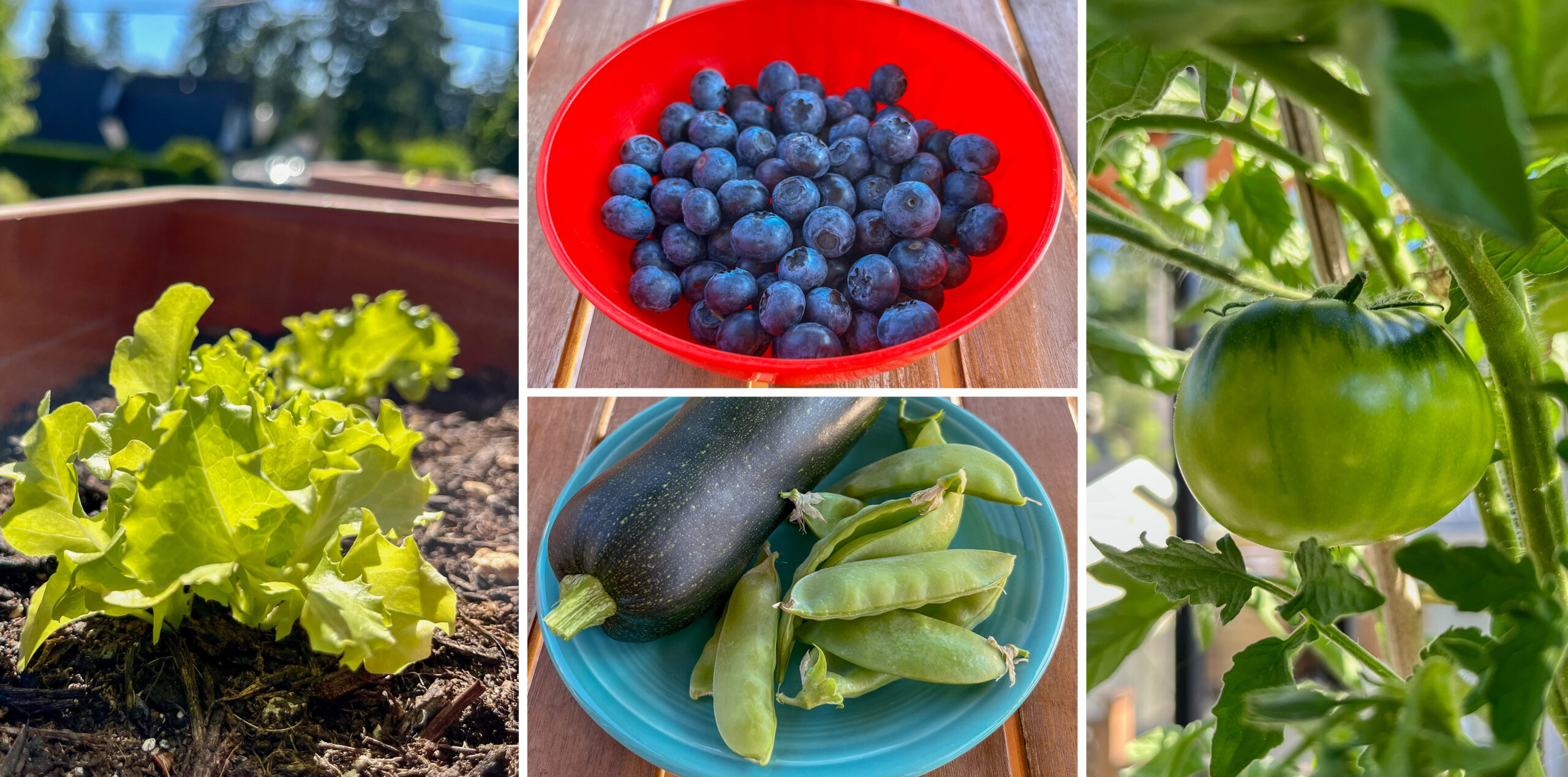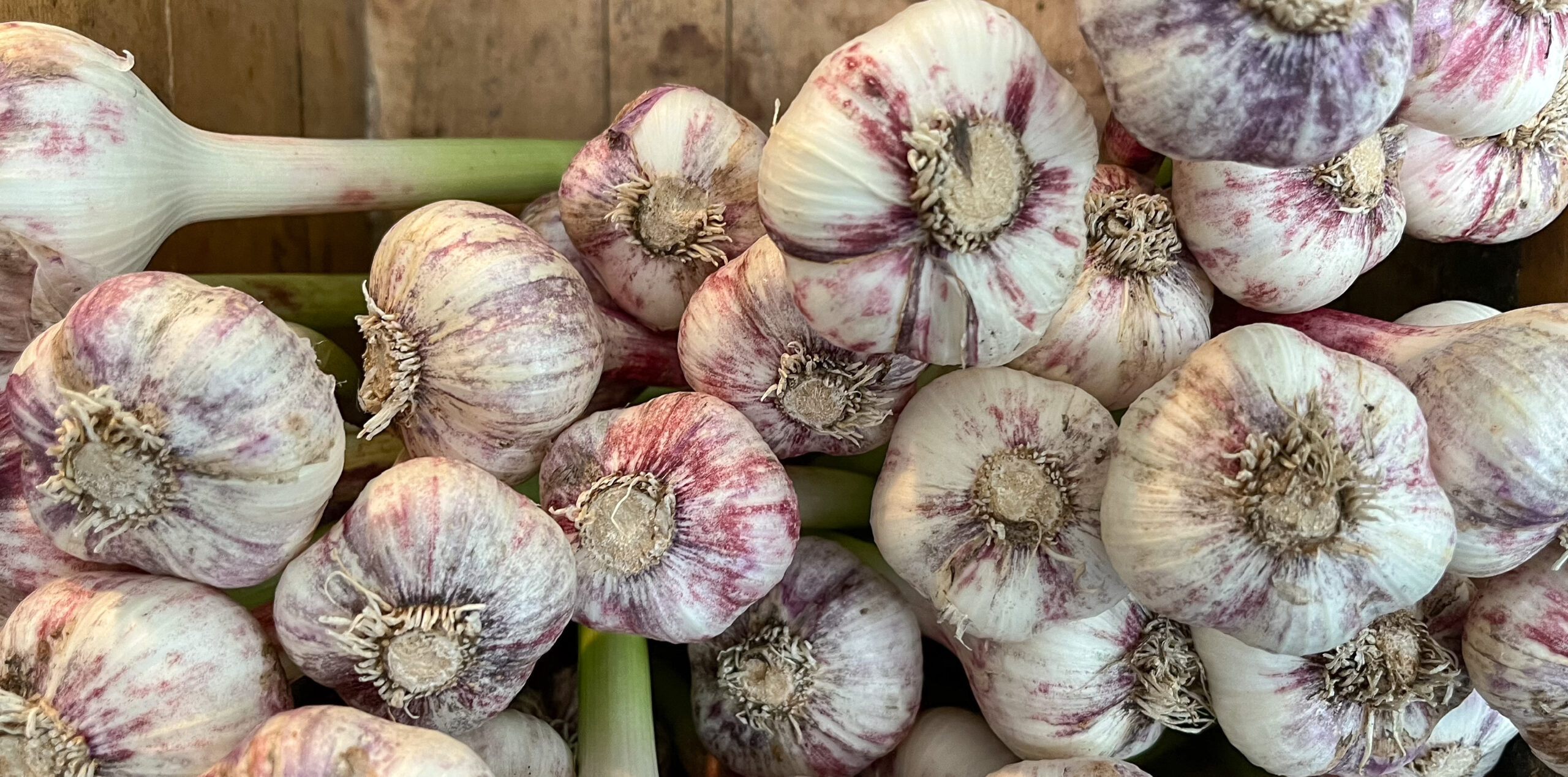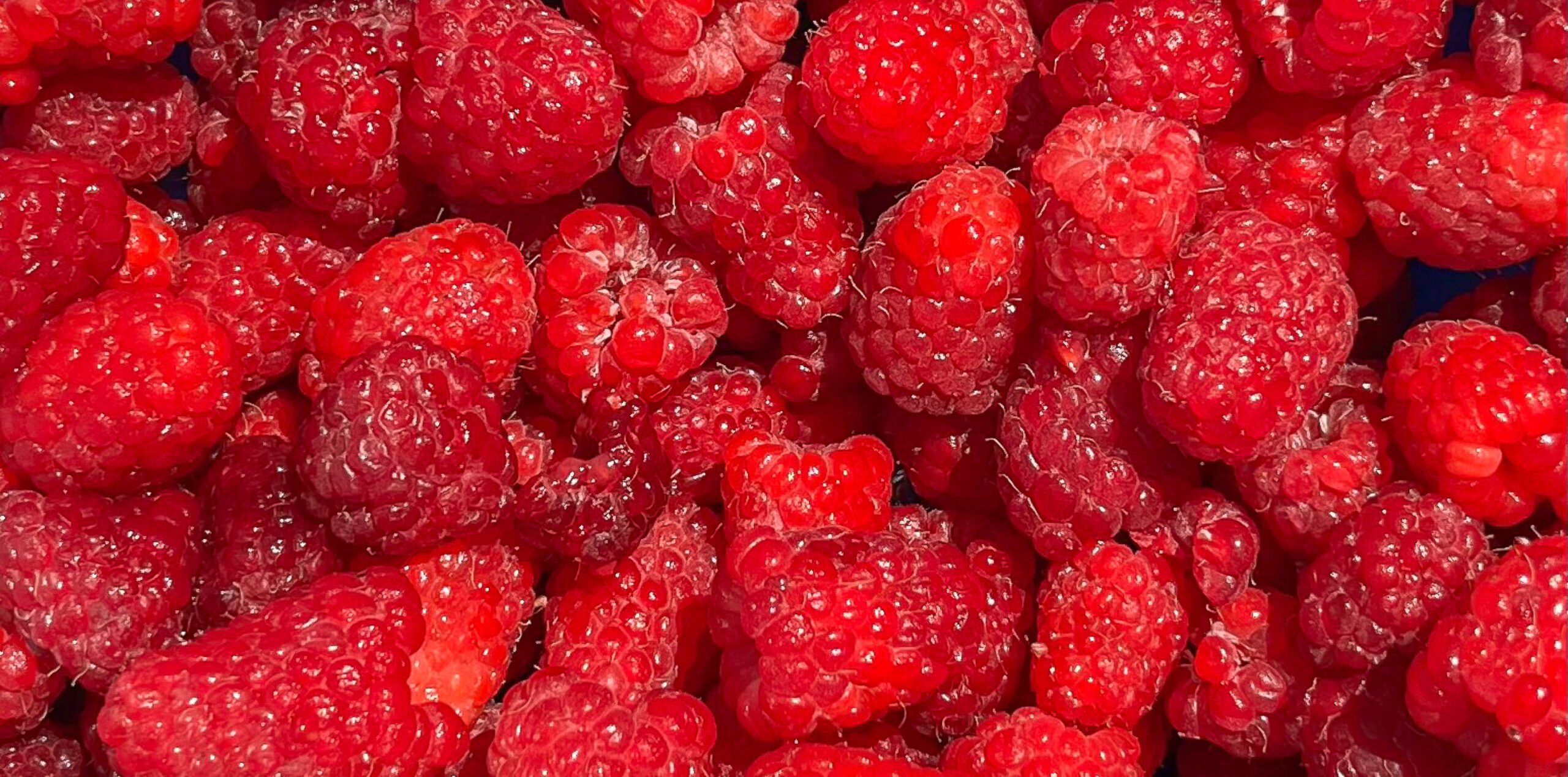story and photos by Kathryn Alvarez, student at Pacific Horticulture College –
Even though the “dog days of summer” are upon us, there is much to do in your food garden during the month of August here on the Saanich Peninsula.
August is a bountiful month, and there is a plethora of vegetables, fruits and berries to be harvested. Root vegetables such as carrots, beets, turnips and new potatoes are ready, as are lettuce, arugula, Swiss chard and collards. Cabbage, broccoli, cauliflower, eggplant, peppers, summer squash, green beans, peas and tomatoes are at their prime. Blackberries, blueberries, marionberries, raspberries and loganberries are ripe for picking; apples, pears and figs are ready to eat as well.
If you’ve grown garlic, onions and shallots, August is the time to gather the bulbs and store them for use over the winter. Bulbing onions and shallots are ready when their green tops fall over, while garlic is ready when more than 50 percent of the leafy tops have died and turned yellow. After you’ve loosened the soil with a digging fork and carefully removed the bulbs, brush off the soil. Once cleaned, lay them in a single layer on newspaper or flattened cardboard in a dry place out of direct sunlight. Dry them for a few weeks until the greens have withered and the bulb skins have papered. After the bulbs have dried completely, cut the tops off the onions, shallots and hard-necked garlic (leaving a two-inch stem). Soft-necked garlic tops can be left attached to braid several bulbs together. Store the bulbs in a cool, dry place and they should last you through the winter months.
In early August, remove any tomato flowers that have not set fruit; this will allow the tomato plant to ripen any existing fruit faster. Add a compost topdressing to heavy feeders such as squash and cucumbers to help prolong the fruiting period. Prune fruit trees (if required) to slow the growth of overly vigorous trees and to keep them compact. Because of the hot, dry, Mediterranean climate we enjoy in summer on southern Vancouver Island, water your crops and fruit trees consistently.
It may be hard to think of fall and winter vegetables while we bake under the summer sun, but late July to late August is the time to sow fall and winter vegetable seeds. Beets, spinach, Swiss chard, carrots, Chinese cabbage, kale and lettuce can be sown outdoors throughout August for harvest in October. The end of August usually brings slightly cooler temperatures, which are ideal for starting seeds for fall greens and overwintering salad crops – such as spinach, arugula, cabbage, mustards and corn salad – that need an early start to germinate.
Hot weather causes seedbeds to dry out quickly and some seeds, like lettuce and spinach, will not germinate if the soil is too warm. Therefore, we need to create a good environment for the seeds to germinate: cool, moist soil. To achieve this ideal environment, lay burlap on top of the soil once seeds have been sown and water through the fabric, then remove the burlap after the seeds have sprouted. To cool the soil, place a shade cloth over the beds or containers, and keep your fingers crossed for slightly cooler weather.
For those who may only have a balcony, it is possible to grow fall and winter vegetables (like the ones mentioned above) in containers. If you have warm-season crops such as tomatoes or peppers in pots, you can undersow them with lettuce or corn salad in late August and enjoy your harvest four to six weeks later. Or simply sow your cool-season vegetables in their own containers and enjoy your bounty later in the year once the summer season has become a memory.
Resources:
Backyard Bounty: The Complete Guide to Year-Round Organic Gardening in the Pacific Northwest, by Linda Gilkeson.
Maritime Northwest Gardening Guide: Planning Calendar for Year-Round Organic Gardening, 2nd Edition by Lisa Taylor.






